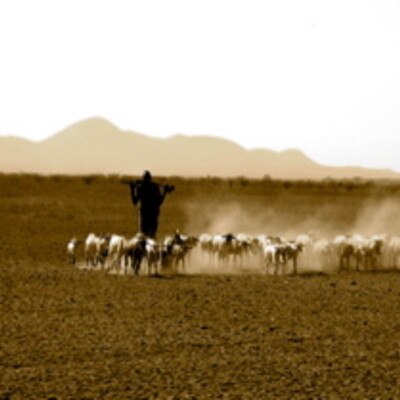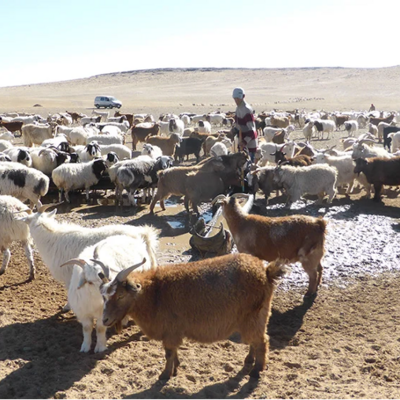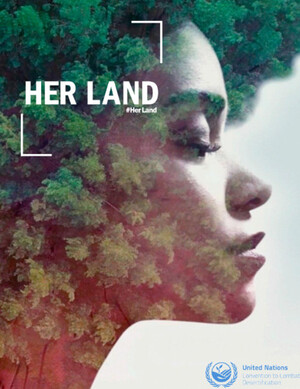

How multifunctional landscapes can deliver on global biodiversity goals
Experts agree that the world needs $700bn annually to restore nature, but the funding source remains uncertain, leading to anger over rich countries failing to pay their share. As representatives from nearly 200 countries gather in Colombia for the UN COP16 Biodiversity Summit, funding and distribution are a key battleground.
That is why during the 7th Investment Case Symposium organized by the Global Landscapes Forum on 25 October in Cali-Colombia, the CGIAR Environmental and Biodiversity Impact Platform, the CGIAR Initiative on Livestock and Climate, STELARR (Sustainable Investments for Large Scale Rangeland Restoration) and several partners. The session highlighted the importance of thriving multifunctional landscapes in achieving the Kunming–Montreal Global Biodiversity Framework (GBF) vision of a world living in harmony with nature by 2050.
All five speakers emphasized bridging financing gaps to support multifunctional landscape research and effectively implement the GBF. Cargele Maso, director of the Environment and Biodiversity Impact Platform, said multifunctional landscapes are critical because the land is the best integrator for the three Rio Conventions.
The three Rio Conventions, established at the Earth Summit in Rio de Janeiro in 1992, include the Convention on Biological Diversity, the Convention to Combat Desertification, and the UN Framework Convention on Climate Change.
These conventions address the three interrelated environmental challenges of desertification, climate change, and biodiversity loss. Multifunctional landscapes offer an integrated approach to these challenges, helping to protect biodiversity, restore land, and mitigate climate change.
A video played during the session highlighted some examples of multifunctional landscapes, such as:
- Agroforestry: Integrating trees into agricultural landscapes
- Wetland Restoration: Restoring critical ecosystems
- Sustainable Agriculture: Practices like crop rotation promote long-term soil health
Multifunctional landscapes create environments where humans and nature can coexist harmoniously.

Expert Insights
When asked how research contributes to the GBF goals, Wei Zhang, IFPRI research fellow, emphasized the need for ambitious plans and effective implementation. “CGIAR’s science program on multifunctional landscapes will work on market incentives, business opportunities, and models,” she said. “Together with our partners, we shall co-produce evidence to inform institutions to enact policies for GBF implementation.”
Janelle Sylvester, a research fellow at the Alliance of Bioversity International and CIAT, discussed the potential of ecosystem service payments in financing multifunctional landscapes. “Yes, they can attract investments by incentivizing sustainable practices that promote biodiversity conservation while fostering local economic growth,” she said. “This attracts public and private financing, which can help achieve scale. Policy support, such as tax incentives, is crucial where organizations invest in local development activities in exchange for tax incentives.”
Peter Goodman, biodiversity financing officer at the World Bank, explained how the World Bank supports investments in multifunctional landscapes. “We recognize the interdependence of ecosystems across landscapes and cannot fund agriculture projects in isolation,” he said. One of the ways the bank funds multifunctional landscapes is by working with clients to repurpose agricultural subsidies. Redirecting just 10% of the $650 billion in agricultural support could return 105 million hectares of agriculture to nature, reduce greenhouse gas emissions by 40%, and increase agricultural output by $2.4 trillion. “This is where the big money is; we are working with 40 countries to do that.”
In his closing remarks, Mxolisi Sibanda, adviser for climate change with the Commonwealth Secretariat, called for partnerships and collaboration, “Multifunctional landscapes could generate multiple benefits for different stakeholders,” “These landscapes can provide all the benefits we need for sustenance. We should all integrate our efforts.”

Watch the recording of the session here:
Watch the video on Multifunctional landscapes and how investing in them can deliver on the Rio Conventions here:
The CGIAR thanks all donors and organizations globally supporting its work through their contributions to the CGIAR Trust Fund.
Funded by the Global Environment Facility, STELARR is being implemented by IUCN and executed by ILRI in partnership with the Alliance of Bioversity International and CIAT, International Center for Agricultural Research for Dry Areas (ICARDA), Center for International Forest Research and World Agroforestry (CIFOR-ICRAF), and the Sustainable Fibre Alliance.
You may also like

ILRI News
Empowering every voice: Participatory GIS can transform resource management and gender inclusion. Case story of Isiolo County, Kenya

ILRI News
How much carbon can Kenyan grasslands store in their soils? Insights from the CarboGrass Project

ILRI News
Goats with aprons? A traditional anti-mating innovation used by Maasai communities in Tanzania
Related Publications

STELARR: Sustainable Investments for Large-Scale Rangeland Restoration
- International Livestock Research Institute

Empowering Community Rangeland Health Workers: A Novel Path to Sustainable Ecosystem Management in Ethiopia
- Eba, Bedasa










